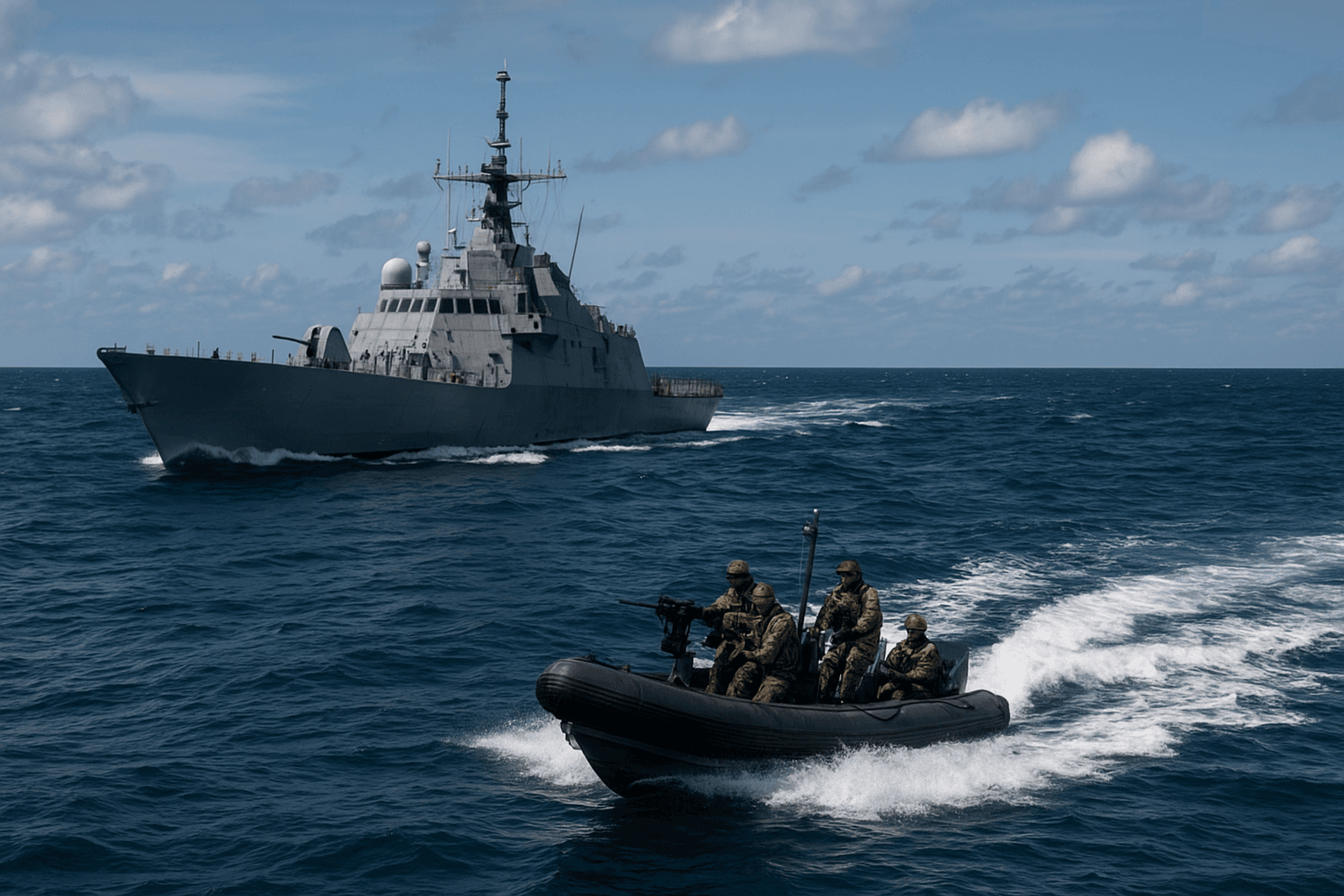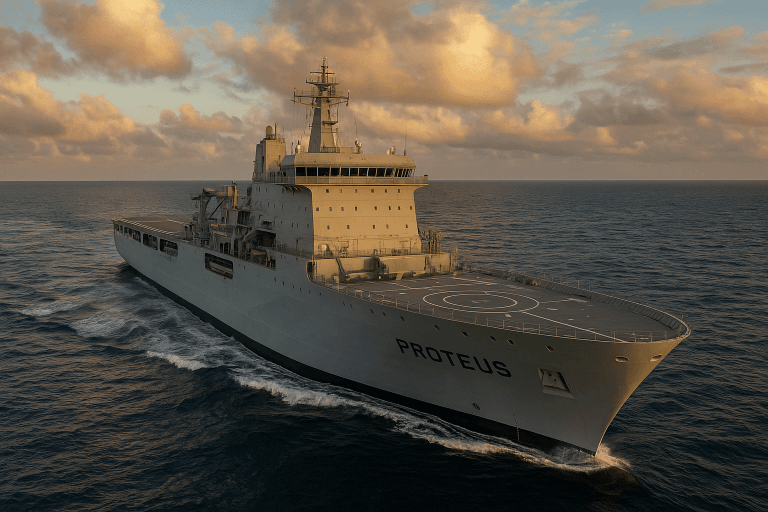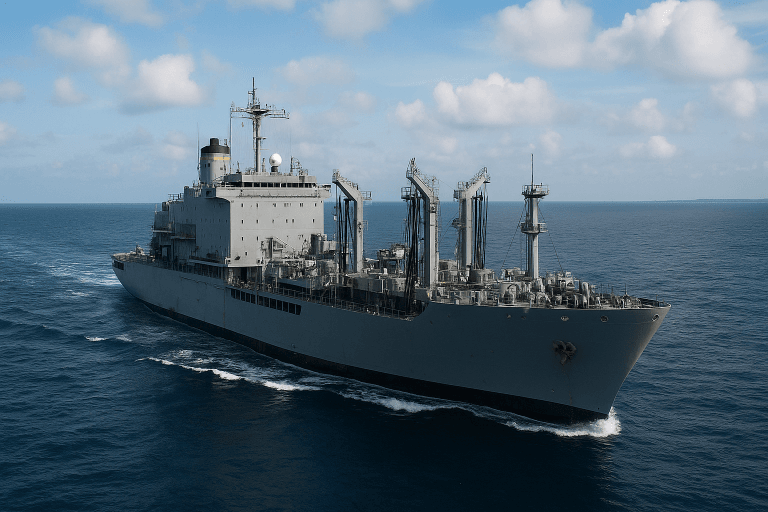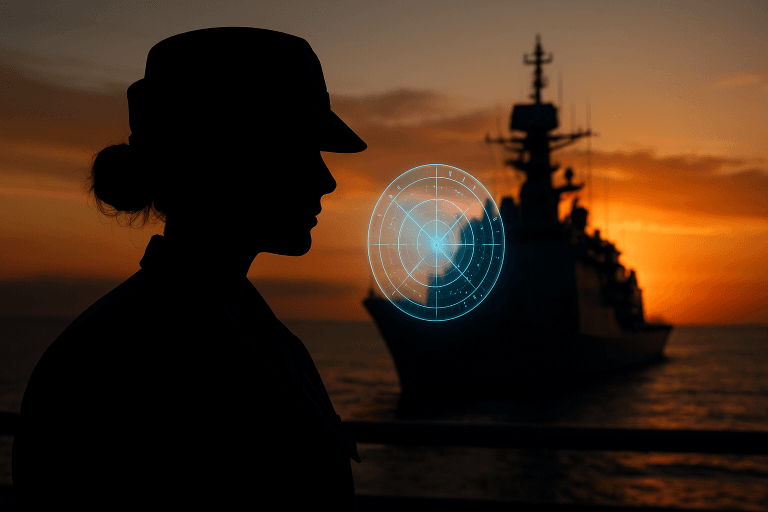
The shift from Sea Dominance to Multi-Domain Battle space
For centuries, naval power has been revolving around fleets of battleships, submarines, and carriers. Contrary to the past tradition, today, naval operations are no longer confined to the seas. As of now, modern warfare is forcing navies to adapt to new technologies, domains, and threats that challenge traditional strategies. The shift in naval strategies indicates that future battlefield is integrated spanning sea, air, space, and cyberspace.
Key contributors of the shift in Naval Warfare
Cyber and Information Warfare is a strong contributor of the shift for the simple reason being, modern navies face increasing cyber attacks targeting navigation, communications, and weapons systems. It is imperative that controlling information is as crucial as controlling the seas.
Another contributor for the shift is the unmanned and Autonomous Systems Drones, unmanned surface vessels (USVs), and underwater vehicles (UUVs) are shifting how surveillance, reconnaissance, and even strike missions are carried out.
Precision Strike and Hypersonics are also responsible for the shift because hypersonic missiles can bypass traditional defenses, reducing the reaction time for carriers and warships, making mobility and stealth more important.
Artificial Intelligence (AI) in Naval Operations is also a contributor in the shift since AI is being used for predictive maintenance, decision-making support, threat detection, and swarming drone tactics. Space and Satellite Integration is another contributor for the shift as naval fleets increasingly depend on satellites for real-time targeting, communication, and navigation. Anti-satellite (ASAT) threats mean navies must prepare for space-denied operations.
The shift Nature of Naval Strategies
The shit has occurred in terms of Power Projection and Distributed Lethality because instead of relying solely on massive carrier strike groups, navies are dispersing offensive capabilities across smaller, more survivable platforms.
The shift has also impacted Grey-Zone and Hybrid Warfare at Sea because the nations are using non-military vessels, coast guards, and cyber means to exert influence without direct conflict. The shift also has a strong impact on Littoral and Arctic Focus Climate change as shifting trade routes are pulling navies into contested littoral waters and the Arctic, where new opportunities and risks emerge.
Major impact of the shift on Global Naval Forces
The shift had a strong impact United States Navy by Pivoting towards great-power competition with China and Russia, investing in unmanned platforms and hypersonic weapons. The shift has also impacted China’s PLAN of expanding itself rapidly with advanced destroyers, carriers, and a strong focus on anti-access/area denial (A2/AD).
The shift also carried a strong impact on Russia by leveraging submarines, missile systems, and hybrid tactics despite economic challenges. India, Japan, and NATO Navies were strongly impacted by the shift by increasing collaboration, focusing on Indo-Pacific security, and countering maritime threats.
Impact of the shift in Future Naval Operations
The shift will impact Swarm Warfare by use of massed drones and autonomous platforms to overwhelm adversaries. The shift will result in Cyber-Resilient Fleets as ships have hardened against electronic and digital disruption.
The shift will impact Joint and Allied Interoperability including seamless integration of naval assets with air, land, cyber, and space forces. The shift has a likelihood of impacting energy and Logistics Innovations like nuclear propulsion, directed energy weapons, and AI-optimized supply chains shaping the future of endurance at sea.
The shift in Navigating the New Naval Frontier
The shift is evident in the naval warfare which is shifting from sheer firepower to adaptability, speed, and integration across multiple domains. The future navy must not only rule the seas but also dominate in information, cyber, and space to remain relevant in modern conflict.
Conclusion
The shift in naval strategies indicates that future battlefield is integrated in spanning sea, air, space, and cyberspace. The shit has occurred in terms of Power Projection and Distributed Lethality because instead of relying solely on massive carrier strike groups, navies are dispersing offensive capabilities across smaller, more survivable platforms.
Cyber and Information Warfare is a strong contributor of the shift for the simple reason being, modern navies face increasing cyber attacks targeting navigation, communications, and weapons systems. It is imperative that controlling information is as crucial as controlling the seas.
The shift had a strong impact United States Navy by Pivoting towards great-power competition with China and Russia, investing in unmanned platforms and hypersonic weapons. The shift has also impacted China’s PLAN of expanding itself rapidly with advanced destroyers, carriers, and a strong focus on anti-access/area denial (A2/AD).
The shift will impact Joint and Allied Interoperability including seamless integration of naval assets with air, land, cyber, and space forces. The shift has a likelihood of impacting energy and Logistics Innovations like Nuclear propulsion, directed energy weapons, and AI-optimized supply chains shaping the future of endurance at sea.




